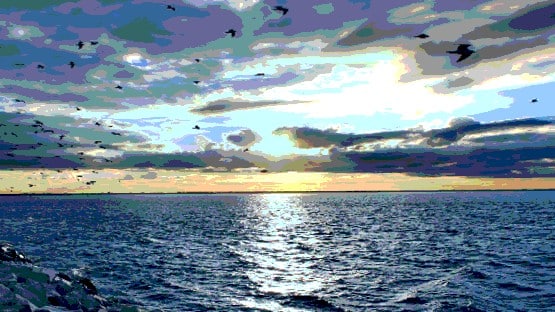
The Chesapeake Bay’s so-called “dead zones” – low-oxygen areas that can suffocate underwater life and shrink available habitat – are expected to be above average this year.
This is the finding of researchers from the Chesapeake Bay Program, University of Maryland Center for Environmental Science, University of Michigan and U.S. Geological Survey, which announced Friday that they are predicting this year’s Chesapeake Bay dead zones to be just above the long-term average taken between 1985 and 2023.
The research found that the dead zones likely began earlier this year due to warmer-than-normal temperatures throughout the spring as well as weaker winds.
Nitrogen and phosphorus (referred to together as “nutrients”) pollution that runs off from across the Bay watershed spurs the growth of algae blooms, which remove oxygen from the water when they die off.
Due to higher-than-average precipitation, stream and river flows to the Chesapeake Bay recorded from January-May were 63 percent higher than the previous year and 23 percent higher than the long-term average.
Based on this information, researchers estimate that the total annual hypoxic volume for the Bay in 2024 will be 4 percent higher than the historic long-term average.
The January-May data showed that 131 million pounds of nitrogen entered the Bay as measured at the River Input Monitoring stations located on the Chesapeake’s nine largest tributaries, representing about 78 percent of the total area of the watershed. The amount of nitrogen entering the Bay in 2024 was approximately 77 percent higher than last year, when below-average rainfall brought about 74 million pounds of nitrogen into the Chesapeake.
The amount of nitrogen pollution entering the Bay in 2024 is roughly equal to the long-term average (1985-2023).
In the areas of the Bay not monitored by the RIM stations, additional pollution is reported from wastewater treatment plants and included in the forecast. In 2024, 4.7 million pounds of nitrogen were recorded flowing into the Chesapeake between January and May, which is less than the 5.2 million pounds recorded in 2023 and the 5.7 million pounds recorded in 2022.
The slightly above-average estimated hypoxic volume following a season of relatively high stream and river flows indicate that management efforts to keep nutrient runoff out of the Bay watershed is having the desired effect, the researchers are saying.










